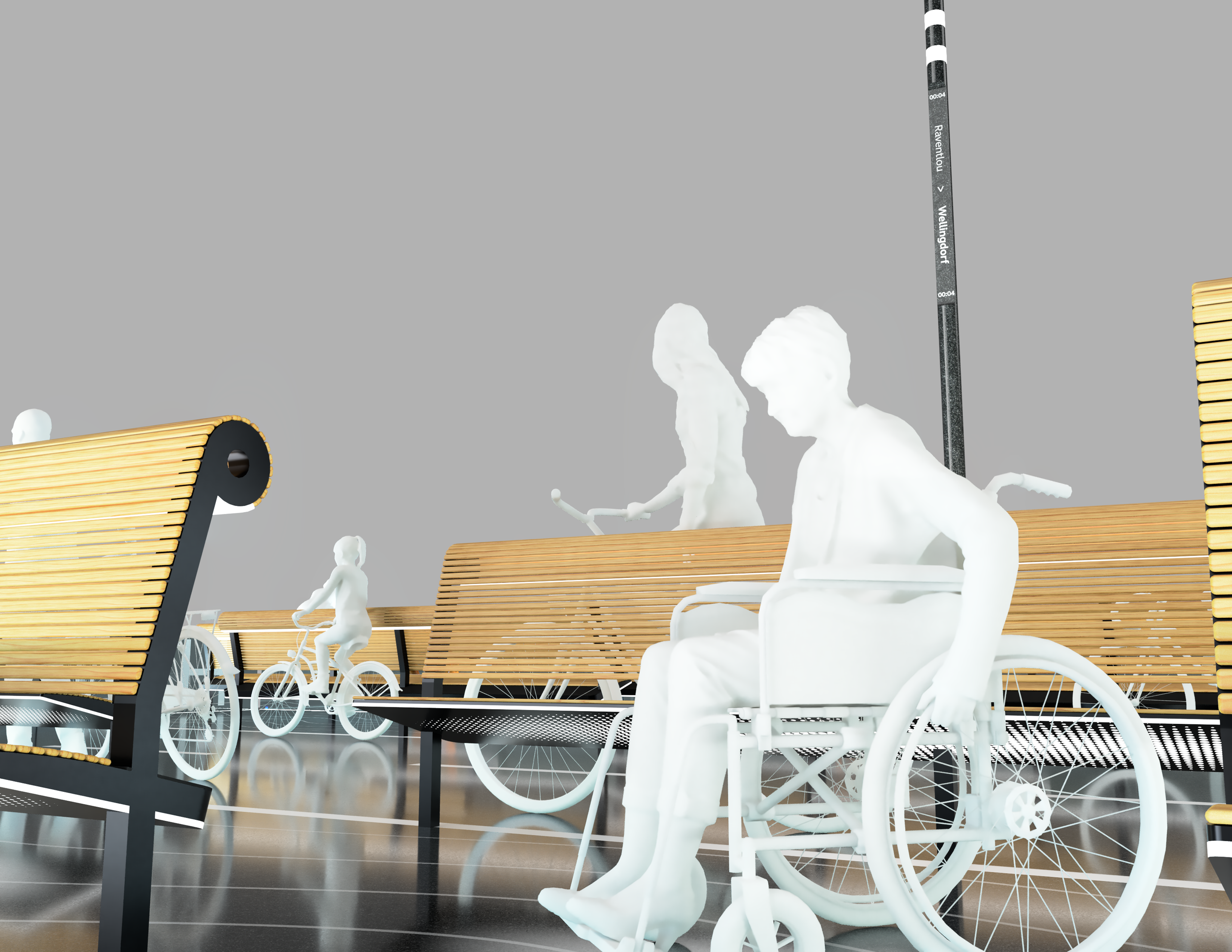
Focus: Sustainable Public Mobility | Period: Winter Semester 2020/21 | Mentor: Prof. Detlef RheinVeloroute H20 is a Kiel specific sustainable mobility solution. Connecting the East and West side of Kiel by expanding the existing Veloroute - bicycle road - network over the Harbour.
Concept
Veloroute H2O is a sustainable public mobility concept that aims to connect the two sides of Kiel. Bicycles are a sustainable form of mobility that proved to be one of the safest options during a pandemic; however, a bike can only take you as far as the infrastructure goes.
Hence the need for an infrastructure that crosses Kiel's Förde on a consistent and reliable schedule. Residents can then cut down on their carbon footprint and celebrate the Förde on their daily commutes.
Ideation
Solution
Veloroute H2O is an electric & autonomous ferry that transports bikers across the Förde. The VeloCat and VeloGuardian are powered by renewable energy harvested by wind and tide turbines installed along the Kiellinie.
The VeloGuardian is the primary communication method for the VeloCat as it travels in circles on the departure shore, indicating that the ferry is about to leave. Before Arriving on the opposite shore, the VeloGuardian clears out the water while flashing red to indicate caution.
Azimuth propellers power both the VeloCat and VeloGuardian. Allowing them to perform extreme manoeuvres without the need to rotate the vessel when travelling back.
The surface of the VeloCat is made from a cement and mussel shell composite that is as rigid as Veloroute roads. However, the surface under the VeloBenches is made from mussel shells and a biopolymer mix that is semi-flexible and shock-absorbent.
The VeloCat and VeloGuardian are largely made from the same materials and components:
Railings: are made of recycled glass.
Hulls: are made of recycled HDPE.
Benches: are made of wood and recycled aluminium that is galvanized with titanium (as aluminium is both lightweight and recyclable, and the titanium layer is antimicrobial).
Surfaces: are made from a cement and mussel shell composite that has the same rigidity and grit as the Veloroute roads. However, to reduce the vibrations of the catamaran, the surface under the VeloBenches is made from mussel shells and a biopolymer mix that is semi-flexible.
Ten VeloBenches on each VeloCat allow passengers to sit in various positions. Bike riders can lean on them or rest their foot on the backside of the bench without unseating from their bike.
VeloDocks are an integral part of the Veloroute H2O network as they connect to Kiel's land Veloroute network.
The docks have wind and tide turbines powering VeloCat ferries; they also have mussel socks on either side of its floating platforms. The mussel farms help filter the Förde's water, reduce eutrophication and restore aquamarine habitats.
The Velodocks will have two underground floors that allow Kiel's residents to celebrate the Förde from a different perspective.
With panoramas that overlook the mussel farms and the mussel transportation belly of VeloCat, people can witness and follow the restoration of the Förde over time as it will allow them to connect with Kiel's marine natural residents.






































